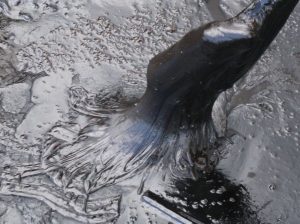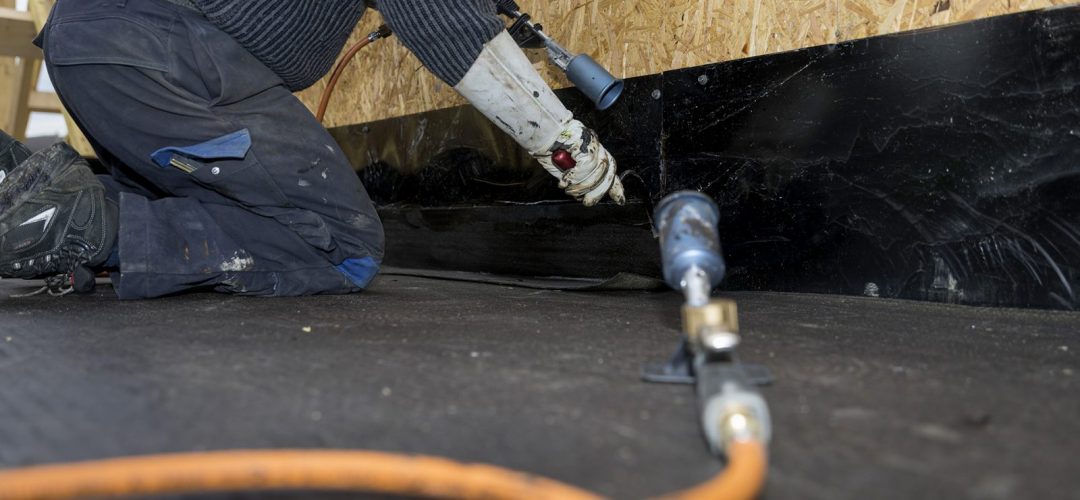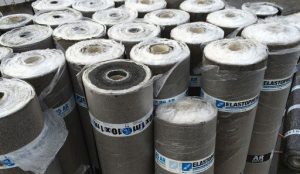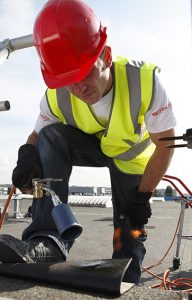
When used as a sealer, bitumen is easy to work with, incredibly effective and durable.
The mission of bituminous waterproofing coatings
The most basic mission of waterproof coatings, such as bituminous waterproofing, is to protect against water infiltration. These coatings are mainly used in building works, notably for flat roofs, which benefit greatly from bituminous waterproofing. The covering prevents rain, snow and, by extension, all traces of moisture from penetrating the building. Waterproofing prolongs the life of a construction and offers a solid surface that can accommodate vegetation, pedestrians or even vehicles, all while ensuring safety.
Bituminous waterproofing can adapt to all styles of architecture: flat roofs, steeply sloping roofs, garden terraces, coloured mineral or metal roofs, parking decks, tiled terraces etc.
The advantages of bituminous waterproofing
Bitumen: a natural process for exceptional longevity
Bitumen is a material that exists naturally in ancient oil deposits. However, the bitumen used to manufacture bituminous waterproofing membranes is not extracted directly from these deposits, but is reproduced industrially.
It is made by refining crude oil, but by reproducing the natural process that separates the different fractions of oil. Thus, it does not require any specific, chemical transformation, but is obtained by distillation. It represents the most abundant product of this distillation.
The advantage of using bitumen as a waterproofing process is that it does not require the use of chemicals, which gives it exceptional stability over time and does not pollute the environment.
Furthermore, since distillation is a short process, it is not only economical, but also very energy-efficient, while producing less waste than other sealing materials.
The other components of bituminous waterproofing
Bituminous waterproofing coatings consist of polymer-modified bitumen to which inert, or at least chemically weakly reactive, components are incorporated. These are generally sands, slate extracts, fillers and other polymers.
Some components are made from recyclable waste, such as plastic bottles.
The properties of bituminous waterproofing
Bituminous waterproofing is very popular because it is both very effective and easy to use. The
mechanical properties are ideal, with a fairly soft, flexible consistency and being fully hydrophobic. This allows it not to absorb water, nor to let it pass, but also to adapt to the movements of building structures, without breaking, thanks also to its adhesion qualities.
The use of bituminous waterproofing compounds contributes to the preservation of the environment. Its remarkable durability avoids the need to frequently change or replace it. As bitumen is mainly composed of carbon and hydrogen, it does not generate any greenhouse gases. It is also not a contaminant because it is insoluble in water and not biodegradable. It can therefore be used to collect water in all its forms: water from reservoirs, polluted water, water for irrigation, etc.
Laying bituminous waterproofing
Bituminous waterproofing membranes come in various forms. They are packaged in rolls or sheets. Once installed, they must be flame welded or sometimes hot air welded, depending on the environment. Indeed, some seals are installed in sensitive areas that are not very compatible with flames and, in this case, the hot air devices allow the welding of the so-called “raised” parts, with the same efficiency as with the flame.
Membranes can also be available in self-adhesive or mechanically fastened forms.


